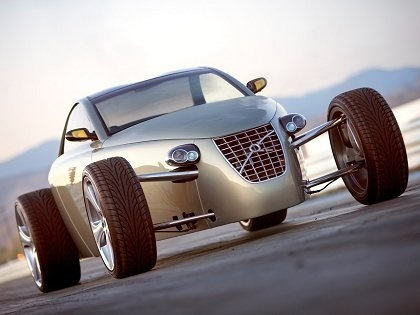1992 Sbarro Astro
- Story Cars

- Nov 26, 2021
- 3 min read
1992 was an important year for Franco Sbarro. It was the year he opened his first design school, Espace Sbarro, at Grandson in Switzerland. It was such a special event that he decided not to participate in the Geneva Motor Show because he did not have the time to create a new model. However, contrary to expectations, a new Sbarro was at the March 1992 show: the Astro.
The story of how this car was born is worth telling. In 1991, Frank Verkhauser, a Zurich ophthalmologist, contacted Sbarro hoping to commission him to build his dream car. Sbarro refused because he was wholly taken up with creating the school, but he agreed to meet with Mr. Verkhauser. It was a decisive encounter: the warm-hearted Swiss craftsman changed his mind when faced with a sick man. Mr. Verkhauser had cancer and was exhausted by chemotherapy, and was looking for a project with which he could be actively engaged. He wanted to have built a unique car powered by a Ferrari engine, aggressively styled and with cutting-edge electronics.
On the outside, the car is characterized by a plunging, wavy line from a massive rear topped with a substantial aerofoil to a very sharp front, typical of certain Sbarros, e.g., the Ionos. This bulky rear section, especially in profile, is a great benefit when one realizes the size of the rear alloys: an unprecedented 19 inches. The convoluted lines are that Frank Verkhauser wished to have three seats and plenty of room for luggage: there are boots back and front. The huge lateral air scoops provide cool fresh air to the engine. Notice the two micro-headlights unusually positioned just forward of the windscreen.
The inside is wonderfully bright, mainly because of the sunshine roof and the light-colored leather trim. In contrast to some constructors, Sbarro has left the top of the dashboard dark to prevent annoying reflections in the windscreen. Mr. Verkhauser, a fan of electronics, had a TSO satellite navigation installed: the type approved for instrument flight by the American Federal Aviation Authority. This is integrated into the central console with a Sony display unit, a video recorder, a retractable keyboard, and a telephone. There is also a hi-fi system with a CD player, the top range for this era.
In comparison to all the electronic extravagance, the engine seems quite ordinary. It is taken from a Ferrari 308 GTS, and this V8 motor develops 275 BHP. Curiously the engine uses carburetors rather than fuel injection, which was available. The rest of the Astro is a classic sports car: rear-wheel drive, manual five-speed gearbox, disc brakes all around but no ABS.
Even though the Astro is on exhibit at the Centre Espera, the owner drove it for many trouble-free miles proving that Sbarro can make a reliable and unique car. Perhaps it is not the most spectacular or the most well-known Sbarro. Still, it certainly has a beautiful history: sometimes generosity and a big heart are more important and inspiring than technical wizardry.
Features:
engine: V8 (Ferrari 308 GTS)
configuration: mid-engined, transverse
capacity: 2926 cm3 - (81 x 71 mm)
alimentation: four twin-choke Weber carburettors
power: 275 BHP @ 7700 rpm
torque: 284 Nm @ 5000 rpm
transmission: Rear wheel drive
gearbox: 5-speed manual (Ferrari 308 GTS)
brakes: 4 vented discs
wheels: OZ racing : 9x17" front, 12x19" rear
weight: 1100 kg (estimation)
dimensions: wheelbase 2.34 m, length 4.20 m (estimated)
maw speed: 230 -240 km/h (140-150 mph) (estimated)
Images: Sbarro; Dingo; autodiva.fr






































Comments